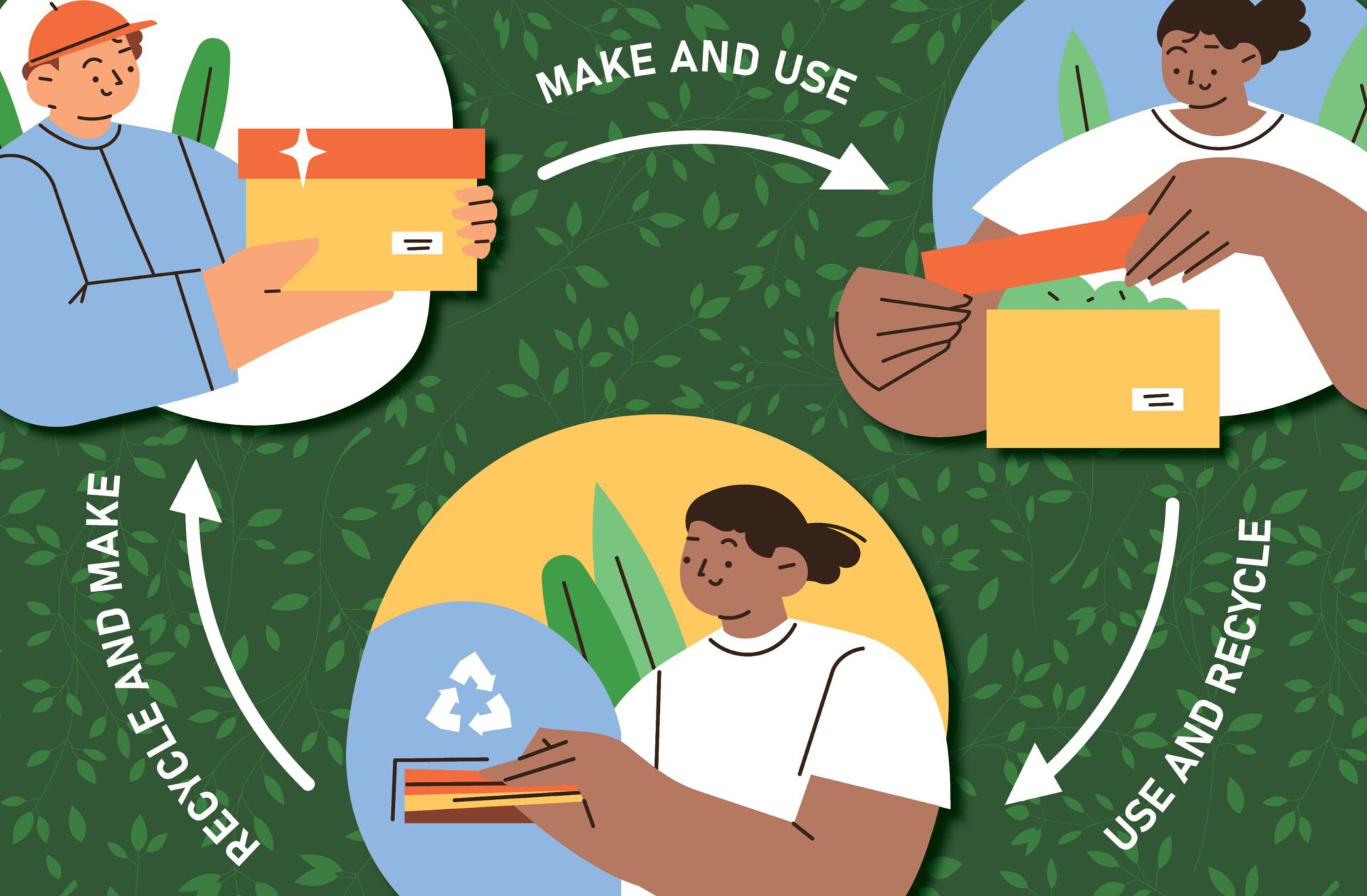What Is Circular Economy And Why Do We Need It?
Discover the Circular Economy: a sustainable alternative to the linear ‘take-make-waste’ model. Learn how it reduces waste, combats climate change, empowers communities, and fosters innovation. Explore examples and principles driving this eco-friendly approach for a greener future.
We are used to the idea of using resources to make products in exchange for some monetary gain, often ignoring what happens to the product after the sale.
Generally, the ‘after’ includes disposal of the product once used. This take-make-dispose system is called Linear Economy. This system has worked well for the exponential growth of economies, but it comes at a terribly grave cost.
The rabid production in every sector is quickly drying Earth’s resources while the use-and-throw culture is filling up our landfills and oceans.
The crisis has grown to the point where a lack of urgent interventions will increase global waste by 70% by 2050.
This is where the Circular Economy comes in to save the day.
What is a Circular Economy?
As opposed to the take-make-waste economy model, Circular Economy involves reducing and eliminating the waste from its root.
” This is done by planned inclusion of the “waste” back into the system as a “resource. “
The use-reuse-and-reuse-again system ensures the resources are used to their optimum potential by building a highly efficient system.
Why is Circular Economy important?
It is not just about saving resources and preventing waste that makes Circular Economy a likeable proposition. Circular economy has the potential to build a stronger, more resilient economic and social system by:
1. Creating New Jobs
As Circular Economy drives innovation and transition towards a better system, it creates new job opportunities in its wake.
Few sectors expected to grow in the coming years – like resource recovery – have a circular economy at their core.
Restoration of the natural systems also helps build more resilient communities and livelihoods by strengthening traditional and nature-based occupations like agriculture and fishery.

2. Combating Climate Crisis
One of the critical principles of the Circular Economy is regeneration and recovery of the resources by undoing the damage done by the take-make-waste economy.
This includes restoration of ecosystems, practising fair and nature-abiding production, cutting down waste, pollution and emissions, and so on.
All of which would have a cumulative positive effect in mitigating the impact of the Climate Crisis. This also helps cut down the costs of loss and damage caused due to climate disasters

3. Empowering Communities
The continual rise in demand for very cheap supply in a Linear Economy is met by the exploitation of vulnerable communities around the world.
On the contrary, Circular Economic design focuses on the constructive development of local communities and ecosystems while eliminating the haphazard use and disposal of waste and pollution.

Environmental pollution is responsible for 9 million premature deaths around the world.
How to build a Circular Economy?
Circular economy aims to balance economic (commercial) output without compromising the planet’s and the people’s longevity.
This is done by practising the following principles:
1. Designing the waste out of the system
As discussed earlier, eliminating waste forms the basis of a circular system. This waste refers to the solid trash that ends up in bins as well as the effluents entering the water, emissions in the air, and more.

To do this, we need to design a system that utilizes everything that it is giving out.
Take, for example, Loop Stores.
This service provides popular FMCG products like Haagen-Dazs ice cream and Axe Deodorants in reusable, returnable packaging.
The innovative packaging is designed to be used and reused multiple times. Since the packaging is made using sustainable materials like metal or glass, managing the ‘waste packaging’ at the end of its life cycle is more profitable than recycling (or downcycling) cheap plastic packaging.
This solves the colossal problem of FMCG packing waste.
Packaging waste makes up around 28% of the total solid waste.
2. Active inclusion of the ‘waste resources’ within the system

We have finite resources, and the stress we have already exerted on these systems is enormous.
Hence the best way to make new products is by inculcating the ‘resources’ already laying in landfills or choking the gutters.
Gjenge Makers is doing precisely that.
This company makes pavement bricks using plastic waste. This innovation diverts the plastic out of dumps and oceans and into active service. These bricks are also twice as strong as the conventional concrete blocks!
A staggering 91% of plastic isn’t recycled!
3. Rehabilitating the society, economy and the environment.
As we move away from our dependence on natural resources, the next step is to rebuild nature and replenish the lost resources.

This involves inculcating practices in tandem with nature – like transition to green energy, agroforestry, ecosystem conservation and more.
Companies are applying this principle into practice by supporting sustainable farming practices like regenerative and organic farming.
Take Alter Eco, for example. This chocolate products based company is helping rehabilitate natural systems by choosing only organic ingredients, skipping palm oil and assisting farmers in transitioning to better farming practices.
The use of chemical fertilizers and other conventional agricultural practices contributes to about 30% of the total greenhouse gas emissions.
As resources become more scarce, adapting to a circular model is inevitable.
This calls for active participation from all the sectors – government, businesses and people – for a balanced, successful transition towards a circular, sustainable future.






